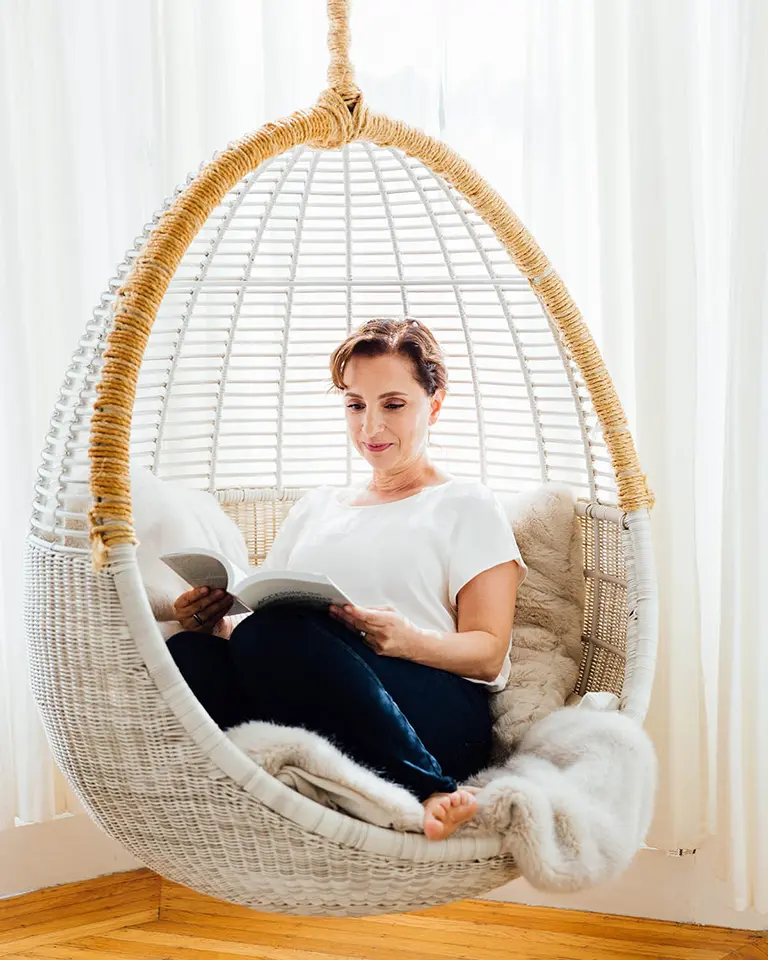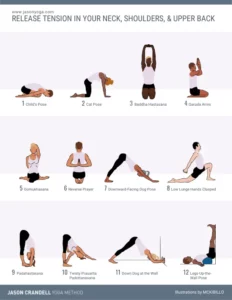I get it…and yet. I’ve spent the past 20-something years focused on creating content, so it’s not only something I truly enjoy, it’s what has given me the independence to earn a living while doing what I love. I’ve also witnessed first-hand how all of the time and energy Jason has put into creating content for the past two decades has helped him create a sustainable career as a yoga teacher.
One key component that makes content creation easier is repurposing. Jason and I just did a whole podcast about this superpower, and it’s something I cover with case-studies in my Content Blueprint for Yoga Teachers program. Here’s a little companion guide to the podcast if you prefer to read things linearly rather than listen:
1. Once is never enough
I’ve seen different marketing statistics thrown around that it takes six or eight or 13 times for someone to see something before they decide to purchase. I’m not sure which stat is correct, but I do know that we need to put content out there more than we might think in order to catch people’s interest.
We are so bombarded by information these days and we can get it a seemingly endless multitude of formats. So it makes sense that you should put the same content in as many different formats as possible to capture folks on their preferred platform.
The bottom line: If you write a great blog post, be sure to put it in your newsletter, on your Instagram feed, your stories, and perhaps make a short Reel or video.
2. It will save your sanity
I have been doing this content thing for a long time. When you feel like a hamster on a wheel, you know you’re doing too much. I encourage yoga teachers to aim for minimizing burnout when it comes to content creation. Instead of thinking of creating content around a different topic each day, think of creating several pieces of content for around the same topic that you can roll out over a week or two.
3. It informs your teaching
When you put a topic out there that really resonates with an online audience, it can help you develop classroom curriculum around that topic. For most of us, it’s easier to test an idea online before we step in front of a group of people and teach it live. If a post “bombs” online, that’s great data to have as you put classes together. And don’t forget — you can always delete a post!
4. It creates a cohesive experience for students
When your online content is consistent across different platforms and it ties in with your teaching, you’re giving your students a really cohesive experience. You want this — you want people to know what to expect from your class. I don’t often use the “B” word (branding), but in this case it’s relevant — great brands are consistent and immediately recognizable and that makes people comfortable and able to engage.
5. Repurposing deepens your knowledge
When you write about or talk about a topic often, you will likely have to do some research and really develop the idea. This grows your expertise around the topic and it becomes second nature for you to talk about it. Time spent on a topic you feel strongly about can ultimately be time well-spent: a simple blog post could become a yoga immersion could eventually become a spot on a panel or speaking gig.
6. It can help you focus your brand
You will be most successful at repurposing content that you feel passionate about and truly interested in. This may take some trial and error. But, over time, you may find that you can write or produce an endless amount of content around a few specific topics. Jason uses the example of his own teaching — he never intended to “niche down,” but over the years his content and teaching has zero’d in around a few areas — sequencing, alignment & technique, and teaching teachers.
7. Warms people up for paid events Once you get your content strategy rolling, you can repurpose content as a way to warm people up for an upcoming paid event. Instead of just deciding your going to do an inversions workshop and boom! putting it on sale with fingers crossed, you can create a month’s worth of content where you introduce people to your approach and ideas around inversions; you can showcase your authority and your passion. And then once the workshop is on sale, your students are excited about it because they know who you are, what your approach is, and what to expect!
These are just a few examples of why repurposing is so important. If you want to learn more about how to do it, join my course Content Blueprint for Yoga Teachers. Repurposing is just one component of this comprehensive course that helps yoga teachers create a sustainable, effective strategy to get their message out to the world.



